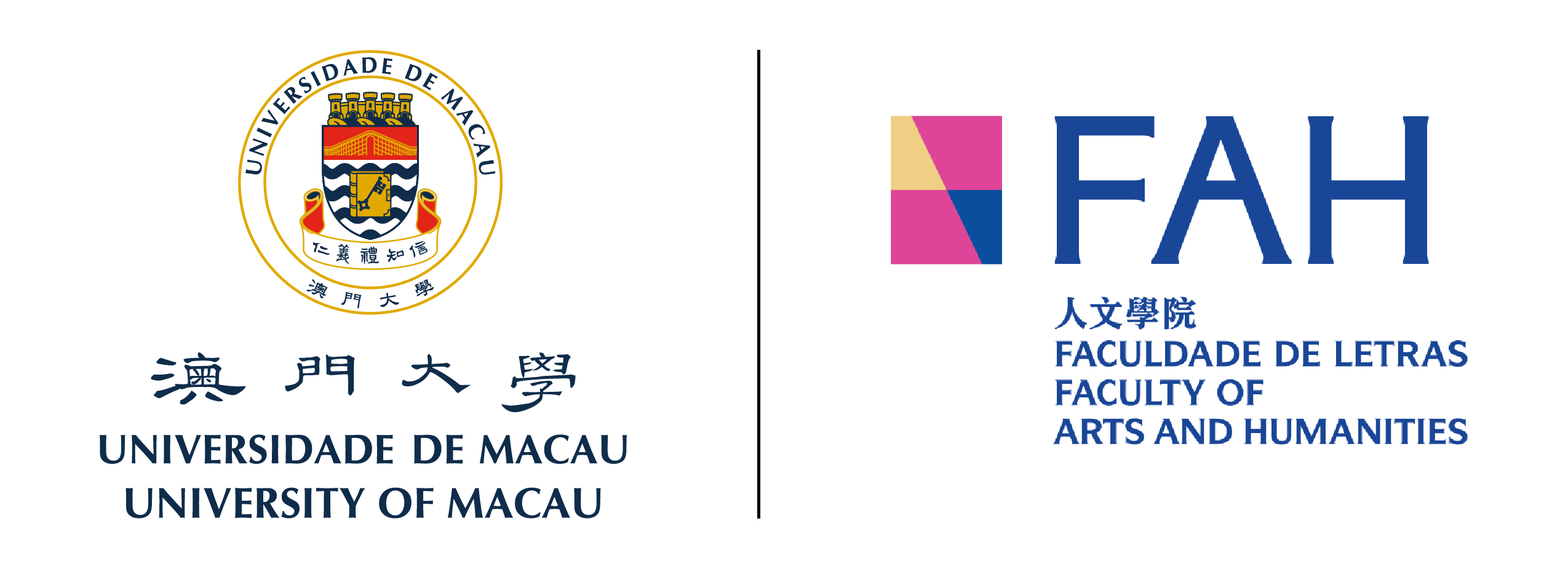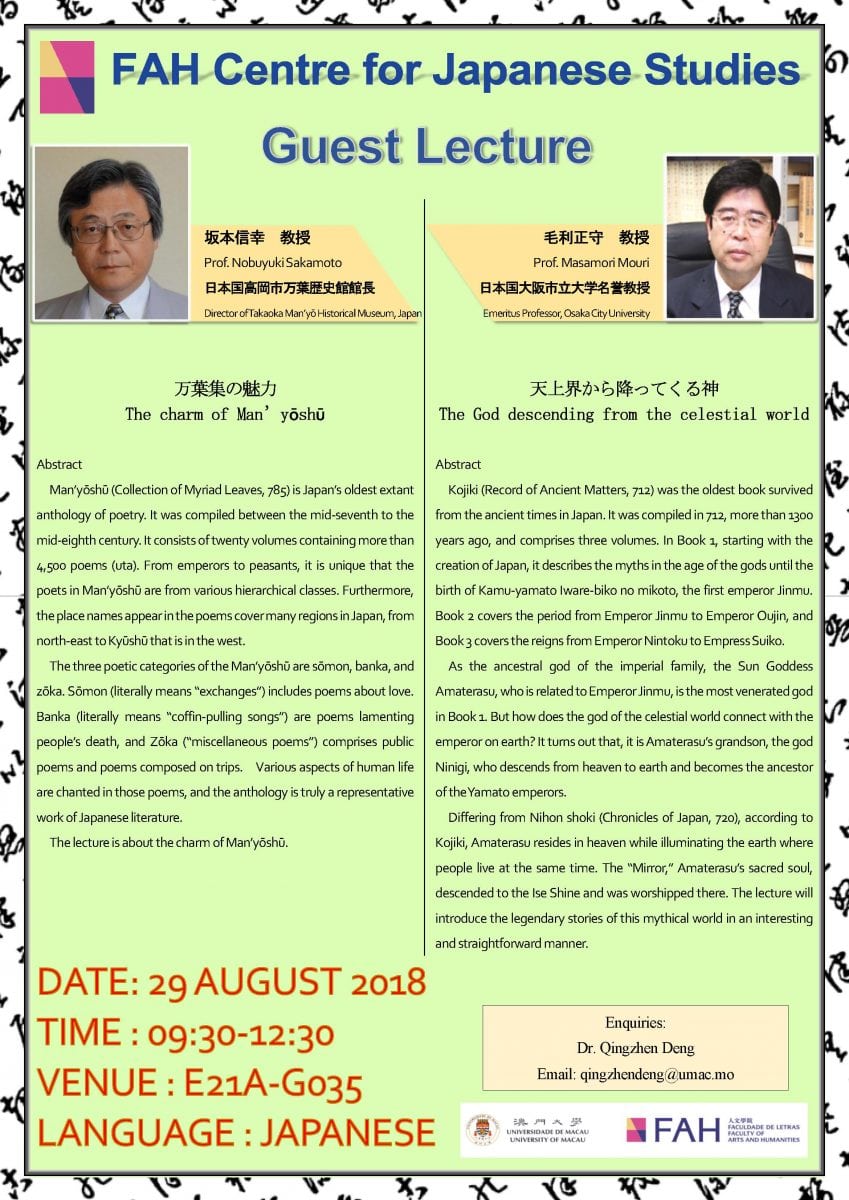Calendar of Events
M Mon
T Tue
W Wed
T Thu
F Fri
S Sat
S Sun
0 events,
0 events,
0 events,
0 events,
0 events,
0 events,
0 events,
0 events,
0 events,
0 events,
0 events,
0 events,
0 events,
0 events,
0 events,
0 events,
0 events,
0 events,
0 events,
0 events,
0 events,
0 events,
0 events,
0 events,
0 events,
0 events,
0 events,
0 events,
0 events,
0 events,
1 event,
FAH Centre for Japanese Studies ~ Guest Lectures
FAH Centre for Japanese Studies ~ Guest Lectures
万葉集の魅力 The charm of Man’yōshū Prof. Nobuyuki Sakamoto Abstract Man’yōshū (Collection of Myriad Leaves, 785) is Japan’s oldest extant anthology of poetry. It was compiled between the mid-seventh to the mid-eighth century. It consists of twenty volumes containing more than 4,500 poems (uta). From emperors to peasants, it is unique that the poets in Man’yōshū are from various hierarchical classes. Furthermore, the place names appear in the poems cover many regions in Japan, from north-east to Kyūshū that is in the west. The three poetic categories of the Man’yōshū are sōmon, banka, and zōka. Sōmon (literally means “exchanges”) includes poems about love. Banka (literally means “coffin-pulling songs”) are poems lamenting people’s death, and Zōka (“miscellaneous poems”) comprises public poems and poems composed on trips. Various aspects of human life are chanted in those poems, […]


